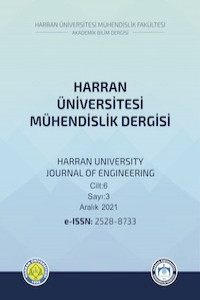Design and Implementation of an Experiment Device for Free Fall Experiment with Mobile Control Application
Abstract
In this study, a device for free fall experiment has developed and implemented. A mobile Android
application is developed in order to control the device via Bluetooth connection and see results of
experiments in terms of measured time values, squares of measured time values and their graphs.
Furthermore, a method is developed and implemented on embedded software in order to make it
possible for more than one person groups to experiment using machine without interrupting each
other’s work or taking each other’s pre-defined turn. Experimental results and comparison with
theoretical calculations provided.
Supporting Institution
Yıldırım Beyazıt University
Thanks
I would like to thank my all instructors at Yıldırım Beyazıt University Electrical & Electronics Engineering Department.
References
- [1] Ali, A., (2014), "The effect of inquiry-based learning method on students' academic achievement in science course." Universal Journal of Educational Research, 2014, Vol 2(1), pp 37-41
- [2] Conrad, D., Hedin, D., (2008) "The impact of experimental education on adloescent development." Child & Youth Services, 1982, Vol 4(3-4), pp 57-76, DOI:10.1300/J024v04n03_08
- [3] Ferreira, A., Seyffert, A. S., Lemmer, M., (2017) "Developing a graphical tool for students to understand air resistance and free fall: when heavier objects do fall faster." Physics Education, 2017, Vol 52(3), pp 1-9, DOI:10.1088/1361-6552/aa65da
- [4] Chiaverina, C. and Vollmer, M., (2005) “Learning physics from the experiments.” In: Informal Learning and Public Understanding of Physics: Third International GIREP Seminar, Ljubljana, Slovenia, September 5-9
- [5] Subali, B., Rusdiana, D., Firman, H., Kaniawati, I., Ellianawati, E., (2017) “Computer-based experiment of free fall movement to improve the graphical literacy.” Indonesian Journal of Science Education, 2017, Vol 6(1), pp 41-48, DOI:10.15294/jpii.v6i1.8750
- [6] Akgün, D., Çankaya, İ., (2003) "Bilgisayar kontrollü serbest düşme deney sisteminin tasarımı." Sakarya University Journal of Science, 2003, Vol 7, pp 31-36, DOI:10.16984/saufbed.91270
- [7] Vogt, P., Kuhn, J., (2012) “Analyzing free fall with a smartphone acceleration sensor.” The Physics Teacher, 2012, Vol 50(3), pp 182-183, DOI:10.1119/1.3685123
- [8] Walker, J., Halliday, D., Resnick, R., (2008) “Fundamentals of Physics (8 Edition Extended). John Wiley & Sons, Inc., pp 122, 330-338, 808, 805-806
Abstract
Bu çalışmada, serbest düşüş deneyi için bir cihaz tasarlanmış ve gerçeklenmiştir. Cihazın
Bluetooth bağlantısı yoluyla kontrolü ve ölçülen düşüş zamanları, bu değerlerin kareleri ve bu
sonuçların grafikleri gibi sonuçların görüntülenmesi amacıyla bir Android mobil uygulaması
geliştirilmiştir. Ayrıca, birden fazla grup ve/veya öğrencinin birbirinin sırasını almadan ya da
çalışmasını bölmeden tek cihazla çalışmasını mümkün kılmak amacıyla bir kullanım senaryosu
ve bu kullanım senaryosunu destekleyen bir sıralama algoritması geliştirilmiş ve bu algoritma
cihaz ve uygulama yazılımlarına dahil edilmiştir. Cihazla yapılan örnek deney sonuçları ve bu
sonuçların teorik sonuçlarla karşılaştırması sunulmuştur.
References
- [1] Ali, A., (2014), "The effect of inquiry-based learning method on students' academic achievement in science course." Universal Journal of Educational Research, 2014, Vol 2(1), pp 37-41
- [2] Conrad, D., Hedin, D., (2008) "The impact of experimental education on adloescent development." Child & Youth Services, 1982, Vol 4(3-4), pp 57-76, DOI:10.1300/J024v04n03_08
- [3] Ferreira, A., Seyffert, A. S., Lemmer, M., (2017) "Developing a graphical tool for students to understand air resistance and free fall: when heavier objects do fall faster." Physics Education, 2017, Vol 52(3), pp 1-9, DOI:10.1088/1361-6552/aa65da
- [4] Chiaverina, C. and Vollmer, M., (2005) “Learning physics from the experiments.” In: Informal Learning and Public Understanding of Physics: Third International GIREP Seminar, Ljubljana, Slovenia, September 5-9
- [5] Subali, B., Rusdiana, D., Firman, H., Kaniawati, I., Ellianawati, E., (2017) “Computer-based experiment of free fall movement to improve the graphical literacy.” Indonesian Journal of Science Education, 2017, Vol 6(1), pp 41-48, DOI:10.15294/jpii.v6i1.8750
- [6] Akgün, D., Çankaya, İ., (2003) "Bilgisayar kontrollü serbest düşme deney sisteminin tasarımı." Sakarya University Journal of Science, 2003, Vol 7, pp 31-36, DOI:10.16984/saufbed.91270
- [7] Vogt, P., Kuhn, J., (2012) “Analyzing free fall with a smartphone acceleration sensor.” The Physics Teacher, 2012, Vol 50(3), pp 182-183, DOI:10.1119/1.3685123
- [8] Walker, J., Halliday, D., Resnick, R., (2008) “Fundamentals of Physics (8 Edition Extended). John Wiley & Sons, Inc., pp 122, 330-338, 808, 805-806
Details
| Primary Language | English |
|---|---|
| Subjects | Electrical Engineering, Mechanical Engineering |
| Journal Section | Research Articles |
| Authors | |
| Early Pub Date | December 30, 2021 |
| Publication Date | December 30, 2021 |
| Submission Date | December 21, 2020 |
| Acceptance Date | April 21, 2021 |
| Published in Issue | Year 2021 Volume: 6 Issue: 3 |


